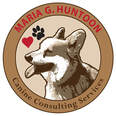A blog for all things dog-related: training, behavior, fun new doggie items, veterinary information and, of course, ways to enhance your relationship with your best four-legged friend!
|
Dogs, just like people, can potentially develop a plethora of ocular (eye) problems. Some of these problems can immediately affect your dog’s vision, while others, if left untreated, can negatively impact your dog’s vision over time. It is always strongly advised that any ocular problems be evaluated immediately by your veterinarian. While your regular veterinarian is equipped to treat many ocular diseases, there are some cases that may require referral to a veterinary ophthalmology specialist. To get the lowdown on canine eye issues, I’ve consulted my veterinarian friend Dr. Alisha Selzner from Companion Pet Hospital in Fishkill.
The eye is a very complex structure, with many different anatomical parts and functions. Therefore, it’s best left to the professionals who understand this anatomy and can assess the eyes in an educated manner. The Assessment “Whenever your pet sees the veterinarian for an ocular problem, aside from examining the eye with an ophthalmoscope (ocular magnifying light source), your veterinarian may also check your dog’s ability to produce tears using a Schirmer Tear Test. They will stain your dog’s eyes with fluorescein stain to ensure there are no scratches or ulcers on the outer portion of the eye, and they will likely use a device called a Tonopen to evaluate the pressure in your dog’s eyes to ensure they don’t have high intraocular pressure (glaucoma) or low intraocular pressure (uveitis)," describes Dr. Selzner. “Some of the more common ocular problems we see in dogs in general practice include corneal ulcers, conjunctivitis, keratoconjunctivitis sicca (aka KCS or dry eye), cherry eye, lenticular (or nuclear) sclerosis, cataracts, glaucoma, and progressive retinal atrophy (PRA).” Dr. Selzner helps us take a look at these ailments in some more detail… Corneal Ulcer: What it is: A corneal ulcer is when the outer, clear surface of the eye becomes scraped or scratched. Potential causes: Scratches of the eye by another animal, rough contact with plants/bushes outside, chemical irritation (such as getting shampoo in the eye), self trauma while scratching or rubbing the area around the eye, dry eye/lack of tear production, and distichiasis (an eyelash that arises from an inappropriate spot on the eyelid and may face inward, hence rubbing on the eye).
Treatment: Corneal ulcers are usually treated with a topical ocular antibiotic drop or ointment. Simple ulcers tend to resolve within a few days of being on the antibiotic drops. More complicated or deep ulcers may require other medications or procedures to encourage healing. Some ulcers can become so deep or infected that they can lead to rupture of the eye. This is another reason why it is imperative to have ocular problems addressed immediately by your veterinarian. A special note: Some brachycephalic breeds (“smush-faced” dogs like Pugs, Pekingese, Boston Terriers, Bulldogs, etc.) can develop corneal ulcers due to the structure of their face. Sometimes their eyes do not close completely while they are sleeping - this could potentially lead to drying out and desiccation/irritation of the cornea. Also, sometimes the fur from their nose can contact the ocular surface and cause irritation. Conjunctivitis: What it is: An inflammation of the conjunctiva (pink tissue lining the eyelids). Potential causes: While conjunctivitis is more likely to be due to infectious agents in people (i.e. pink eye) and cats, in dogs, conjunctivitis is commonly due to allergies. That said, sometimes bacterial ocular infections can play a role in this. Symptoms: Your dog’s eyes may look red, swollen, and there may be increased tear production. Their eyes may also seem itchy. Treatment: Most times with conjunctivitis, your dog will be treated with a course of topical antibiotic drop/ointment that has a steroid in it to help alleviate the inflammation and the itchiness associated with it. Keratoconjunctivitis sicca(KCS) / Dry Eye What it is: Tears are essential to soothe our eyes, provide lubrication to the eyes, wash away debris and bacteria, and nourish the eyes. While the tears consist mostly of water, there are also some oils released by the glands in the eyelids. KCS occurs when there is a deficiency in the water portion of the tear film. Without treatment, permanent vision deficits can result. Eyes with KCS can be more prone to corneal ulcers as well. Symptoms: Because of the tear deficiency, the eyes become red, irritated, and the dog will develop a yellow gooey discharge made up of oil and mucus. Over time, if left untreated, the cornea (clear outer surface of the eye) can actually turn brown and blindness can ensue. Potential causes: Causes of KCS can include exposure to some medications (like the antibiotic, TMS), the distemper virus, some surgical treatments for Cherry Eye, and hypothyroidism. The most common cause of KCS in dogs though, is immune-mediated destruction of the tear-producing gland tissue (when the body’s immune system turns on itself and destroys its own tissue). Diagnosis: A test called a Schirmer Tear Test can be performed to determine how many millimeters of tears your dog is producing in one minute. If your dog does not produce enough tears, then treatment for dry eye will be instituted. Treatment: Usually consists of an immunomodulating drug, which will suppress the immune system so that it cannot destroy the tear-producing gland, therefore stimulating tear production. Sometimes topical antibiotic drops are used initially, as patients with dry eye can also have an ocular infection initially due to the breakdown of the eye’s protective barrier due to lack of tears. Topical steroids can also be beneficial at first to help alleviate the ocular inflammation. A special note: Cocker Spaniels, Miniature Schnauzers, and West Highland Terriers can be prone to the immune-mediated form of the disease, though other breeds are not exempt from it. Cherry Eye (prolapse of the nictitans) What it is: While primarily an aesthetic concern, it can have negative effects long-term. Dogs, unlike people, have 3 eyelids. The third eyelid arises from the inner corner of the eye and contains a lacrimal gland, which helps to produce the water in the tear film. On occasion, the tissue that holds the lacrimal gland in place loosens and the gland within this third eyelid protrudes.
Treatment: The prolapsed third eyelid can either be removed surgically (which can sometimes lead to dry eye), or the third eyelid can be tacked in place (which sometimes does not last long term). Not all veterinarians are comfortable with these procedures. Hence, if your dog develops a cherry eye, please consult with your veterinarian. They may recommend that you see a veterinary ophthalmologist. A special note: Small breeds, like Boston Terriers, Cocker Spaniels, Bulldogs, and Beagles can be predisposed to this problem. Glaucoma What it is: An ocular disease in which the pressure in the eye increases. It can be extremely painful and have long-term adverse effects such as blindness.
Treatment: If detected early, glaucoma can often be treated with topical medications that can help lower the eye pressure. Treatment is life-long in these patients. Unfortunately, in severe cases where the eye pressure is very high, dogs can sometimes become permanently blind. Dogs and cats actually do very well and can adjust to being blind in one, or even both eyes. That said, the other main concern about dogs with glaucoma is pain control. On occasion, if the pressure in the eye cannot be lowered, and the patient remains painful, the affected eye has to be enucleated (removed). These dogs can do very well after this surgery and they will feel much more comfortable. Progressive Retinal Atrophy (PRA) What it is: A group of genetic disorders of the retina that can occur in dogs. The retina is located at the back of the eye and is composed of photoreceptors that function to convert light into nerve signals. PRA causes the photoreceptors to deteriorate prematurely. Symptoms: Hesitation going outside at night, difficulty navigating stairs, and sometimes dilated pupils. Treatment: There is no cure for PRA at this time. It progresses slowly and is non-painful. If your veterinarian suspects PRA, referral to an ophthalmologist will be necessary to make a definitive diagnosis.
Potential causes: Dogs can be born with cataracts (a congenital form), they can develop age-related cataracts, they can develop cataracts secondary to diabetes, or they can be caused by trauma. The cataract can obscure vision, or in some cases, the dog can become blind due to cataracts if the entire lens is involved. Treatment: With Lenticular sclerosis, the dog can still see through the lens without visual deficits and no treatment is required. Some cataracts can just be monitored over time, while others may require surgical intervention. Options should be discussed with your veterinarian after a thorough eye exam. Ultimately, to determine if your dog is a candidate for cataract surgery, you would have to consult with a veterinary ophthalmologist.
"If your dog does not wear the E-collar as recommended and their eye is itchy or sore, they will want to scratch or rub it, which in turn will cause more irritation, delayed healing, or possibly worsening of the condition," she concludes. So while those “cones” may not be your dog’s favorite thing, please be persistent in keeping your dog’s eyes safe and on the road to recovery! Things you can do to protect your dog's eye health:
So show your dog some love, and show his eyes some love too!
"It's only in the heart that one can see rightly, for the most essential things are invisible to the eye." ~Antoine de Saint-Exupery
0 Comments
Your comment will be posted after it is approved.
Leave a Reply. |
AuthorMaria Huntoon, CBCC-KA Archives
April 2020
Categories |
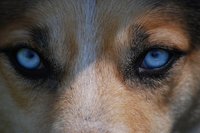
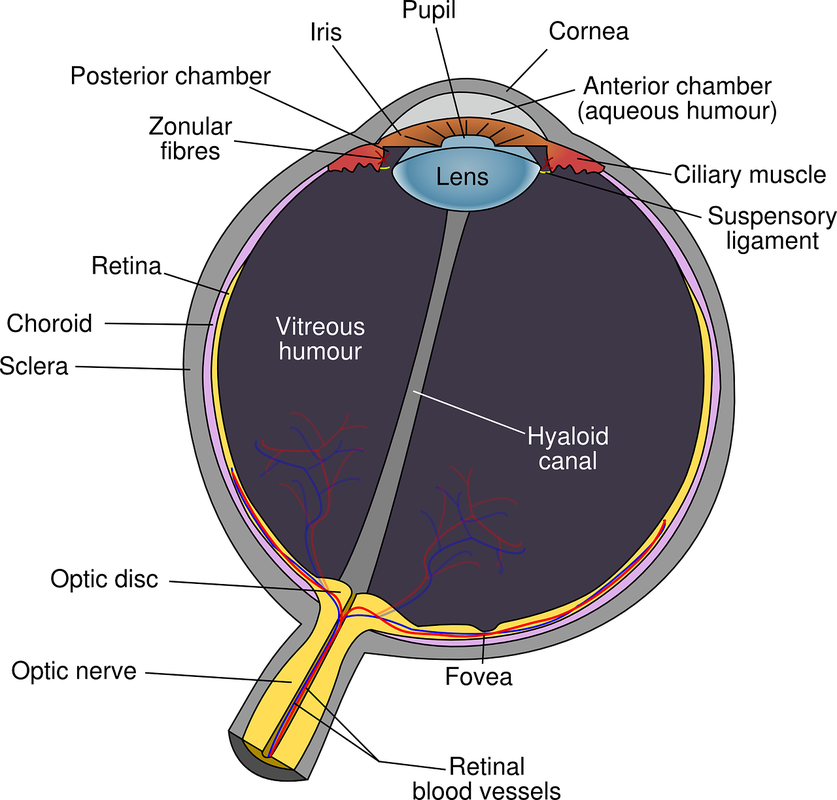
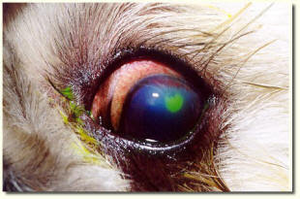
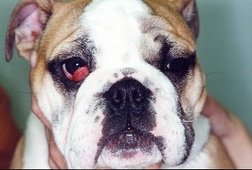
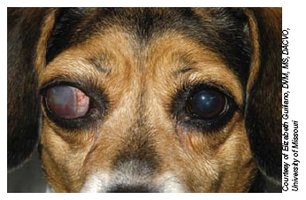
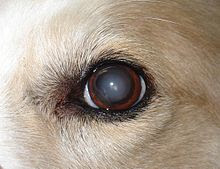
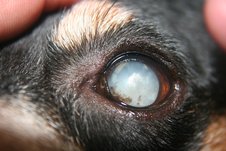
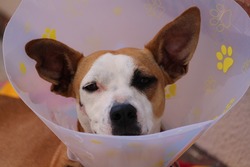
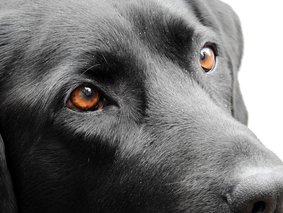
 RSS Feed
RSS Feed
